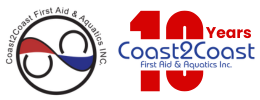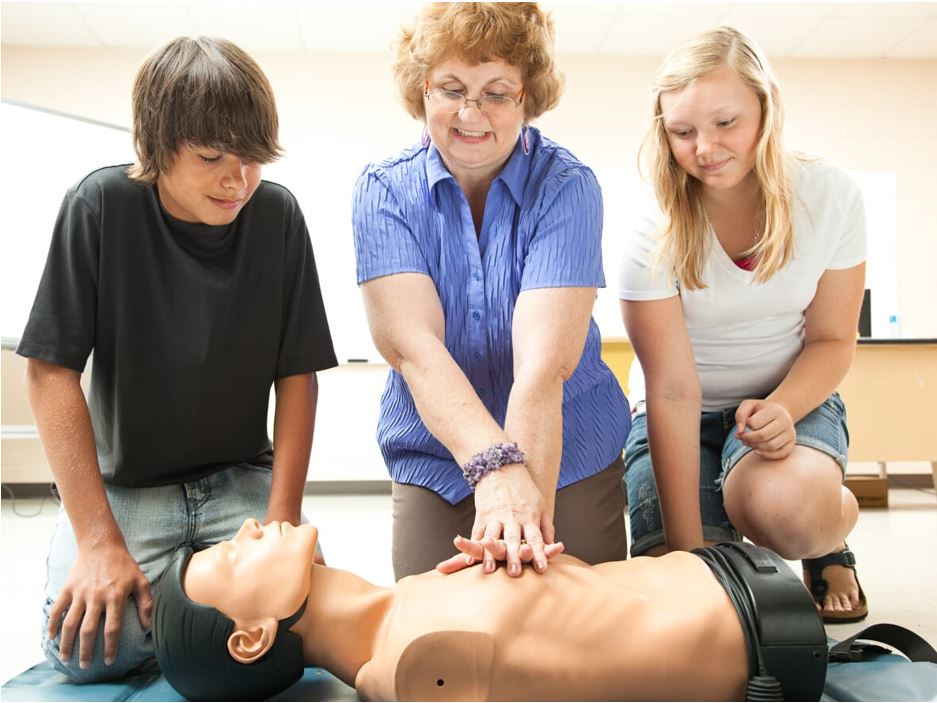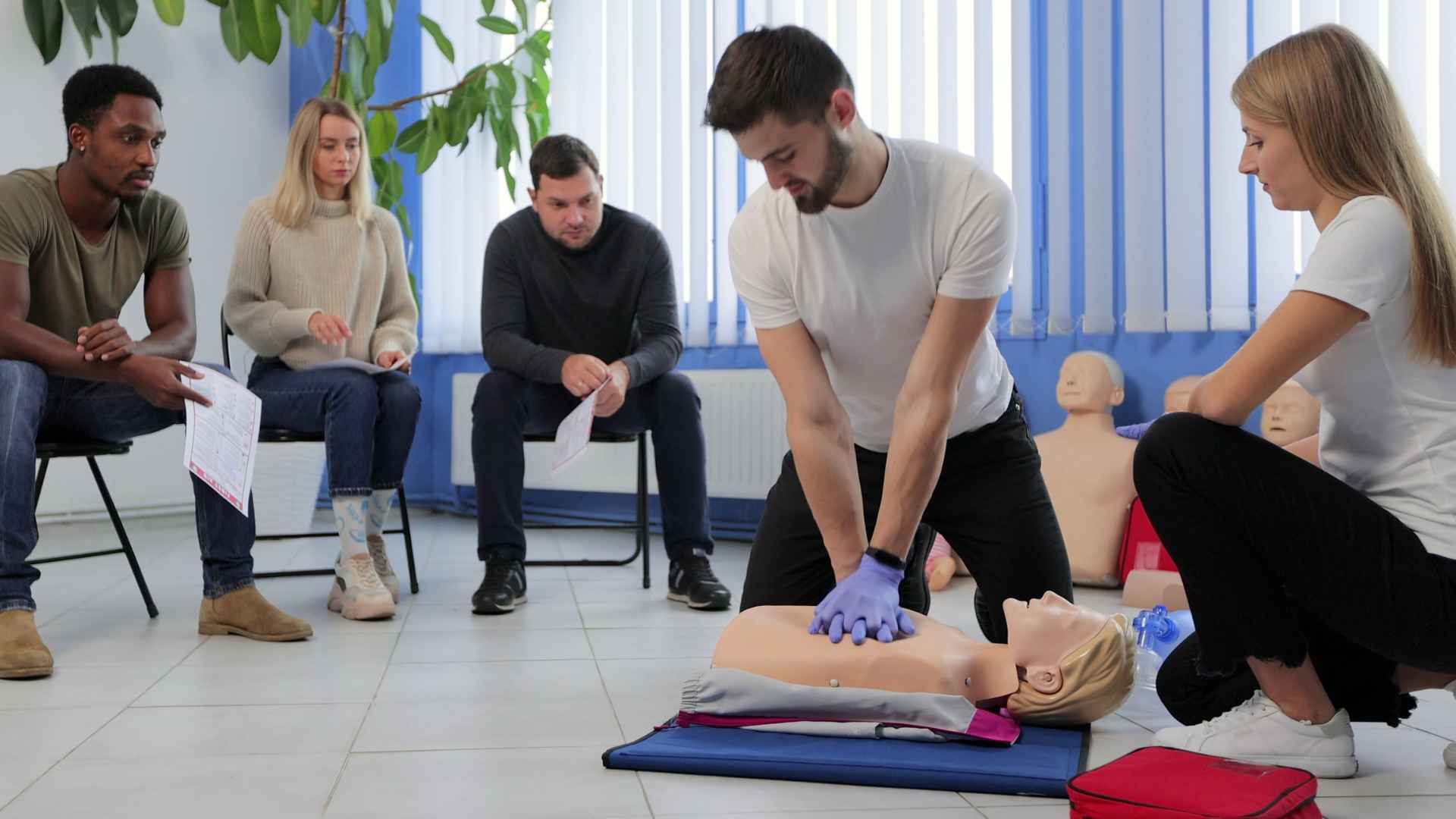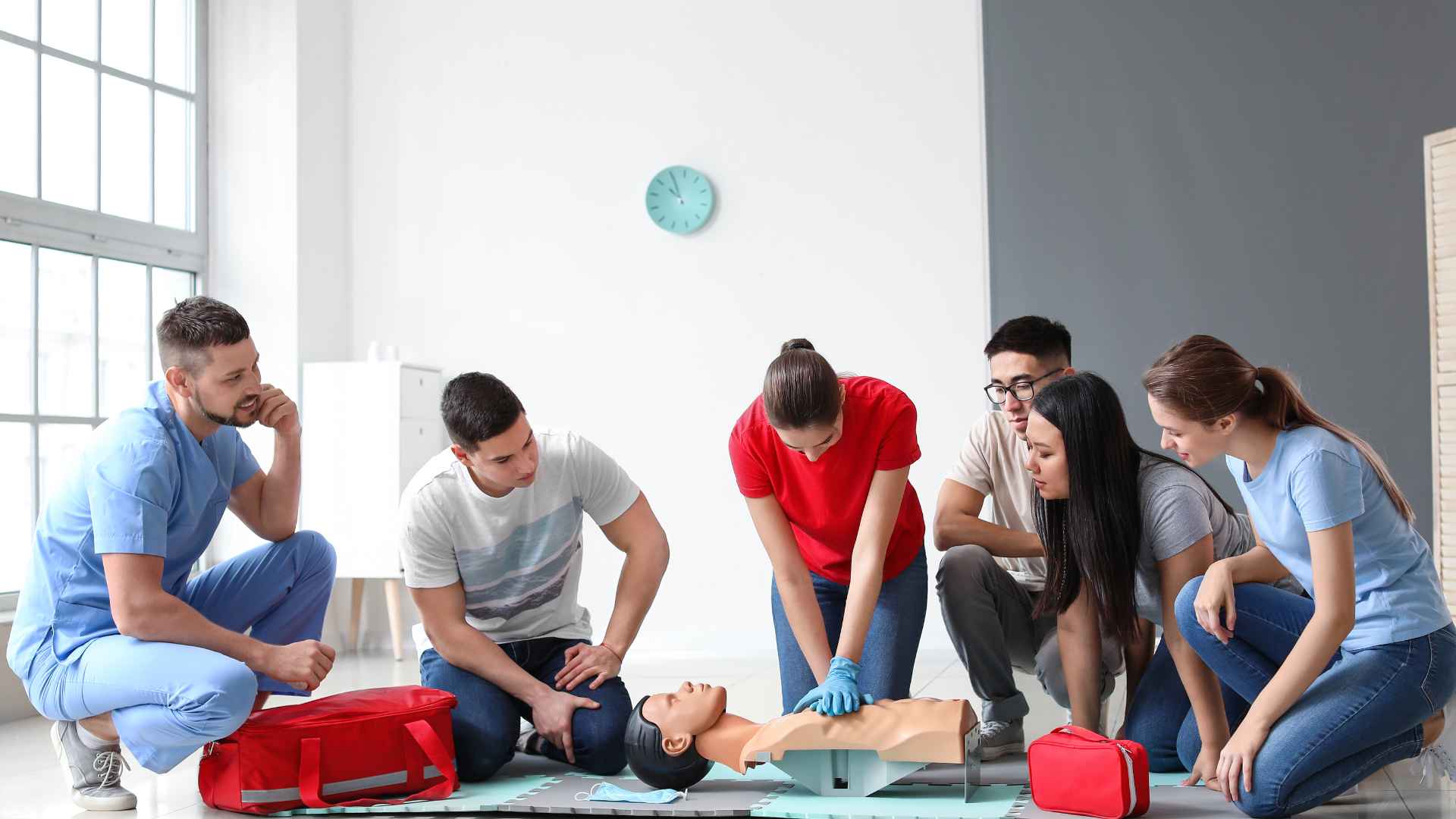The story of two boys saving their grandma from death using CPR skills their mother taught them is an amazing feature, and further proves that even with just a little training, all can save lives no matter what age or size.
Continue readingKeep Your Family Safe With Red Cross CPR Courses
5 Reasons Why a CPR Course is a Good Idea
How To Handle A CPR Emergency in North York?
A CPR emergency can be one of two things – a terrifying, mind numbing disaster, or a challenge. A frightful challenge, to be sure, but one that you can overcome, given the necessary tools and knowledge necessary for the struggle.
Our North York CPR courses are here to provide people with the necessary skills to determine whether CPR is needed, and then provide this lifesaving technique with calm efficiency.
In this blog we will cover a few basic mistakes that can make an inexperienced or overly stressed person fail in performing CPR.
Always tilt the victim’s head back. Being unconscious often means the victim is suffering from a breathing obstruction. The purpose of CPR is to deliver oxygen-rich blood to their brain. Not allowing for the oxygen to enter the lungs by positioning the victim’s head at a specific angle is the first bad mistake you can make and will likely result in loss of life.
Count out every pump. Performing at least a hundred artificial heart beats a minute over the course of several minutes is physically exhausting. Keeping yourself concentrated on the effort by counting it out loud is necessary. Especially if you need to be replaced by someone else and they’ll need to know the count in order to continue exactly from where you left off.
Apply adequate pressure. This is one of the most important components of our CPR training in North York. It is also emphasized by the standard Red Cross CPR training program. Adequate pressure is essential to keep the blood circulating. There is an understandable fear of hurting the victim, but in this type of emergency it’s misguided and dangerous.
Focus on the compressions. Prioritizing mouth to mouth resuscitation has been proven to be a mistake. When you pump on the victim’s chest, the lungs also contract and draw in fresh air. When you pause to give breath, you stop pumping, which is far more important.
Always assess the victim’s response. Check the carotid vessel for pulse before starting and repeat the check for pulse at regular intervals. There will be no breathless awakening like in the films. Chances are the breath and pulse will be restored (not necessarily in that order) but the victim will still remain unconscious. It’s up to you to register their condition when it changes.
This advice is not by any means a substitute for proper CPR training. It is here to show you there are many things to learn if you want to save a life one day.
We honestly hope this day never comes, but it’s our job and commitment to help you be prepared for it, if and when it does. Call us now to enroll to our North York CPR training and get your cardiopulmonary certification.
Become a Red Cross Certified First Aid and CPR Instructor
CPR Recertification – An Overview
This blog is here to guide you through the process of getting your CPR recertification, as well as alleviate any doubts as to why you might need it.
To lay the groundwork for this, here are a few reasons why anyone already certified should still get re-certified every three years, or more frequently if you are a medical practitioner.
-
Skill Retention Concerns
Once you’d gone through your initial training, you received all the knowledge and skill necessary to perform this lifesaving technique on another person. As the years go by, however, can you be absolutely sure that all the knowledge and skills you attained during that first course are still with you? Moreover, are you willing to find it out in a life-threatening situation? Just as is the case with any acquired skill, a lack of practice dulls the reflexes and erodes memory. Refreshing it is as vital as learning it in the first place.
-
New Practices and Rules
The medical field, just as everything else in our lives, does not stand still. Better, more efficient and innovative methods are developed rapidly. The CPR and first aid courses you took three years ago taught the best practices known at the time. Learning newer methods now will increase your efficiency at dealing with the emergency.
-
Laws and Liabilities
This may be a source of some frustration, but the fact is that the law treats a person who knows CPR yet doesn’t have a valid certificate, as if they weren’t trained at all. There is much damage that can result in someone applying CPR when they are untrained, and this is a precaution set in place to prevent it. Of course, if there is no other choice, an untrained (or not recertified) individual may decide to step in and assist, but the legal implications may be bad.
How to get CPR Recertified?
The good news is that recertification is even faster than initial first aid courses or first time cpr courses you took. The process of CPR recertification is pretty simple – you get to take a quick online refresher course for the knowledge set needed to perform CPR, and then proceed to a quick skill test in one of our many CPR training facilities conveniently located all around the Greater Toronto Area.
And finally, don’t look at this as an obstacle, but an opportunity.
An opportunity to enhance your skills, learn new ones and ultimately be better equipped to help save someone’s life.







